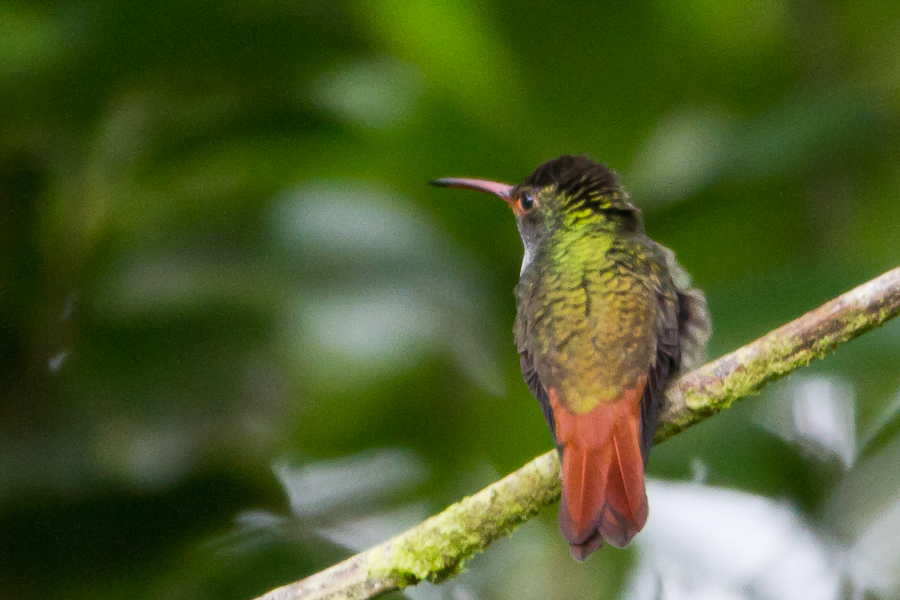Today we woke up relatively late, had a nice breakfast at the Tower, and drover over to Gamboa and the Pipeline Road. This was built in World War II as an alternative way of transporting fuel across the isthmus of Panama in the even the canal was sabotaged. It was never completed, and just dead ends after 20 km or so. However it offers access deep into the rainforest on a muddy road that’s pretty much ignored other than by birders and researchers, amongst whom it’s world famous.
First stop on the way at about 6:30 AM was the Ammo Dump Ponds where we finished yesterday. Among other birds, we got great looks at several White-throated Crakes, #613, a bird heard far more often than seen. We were viewing from the back of the truck, which helped a lot by giving us about a meter and a half extra height so we could see over the reeds and down into the marsh. Otherwise they would have been completely hidden.
We also found one of my target birds for the trip, a Rufescent Tiger-Heron, #614. (There are so many new birds here that target birds are just anything distinctive enough to remember from the field guide.) The Southern Rough-winged Swallow, #615 was also a nice complement to Northern Rough-winged Swallow, also present. You always wonder about birds like Northern Rough-winged Swallow or Northern Mockingbird. You know there must be a Southern one somewhere. otherwise it would just be Rough-winged Swallow or Mockingbird. Of course, in New York we never see these species and they aren’t even in the field guides. Southern Mockingbird is even further south in the Galapagos, but I can now tick Southern Rough-winged Swallow.
- White-throated Crake
- Rufescent Tiger-Heron
- Southern Rough-winged Swallow
- Yellow-tailed Oriole
(more…)


